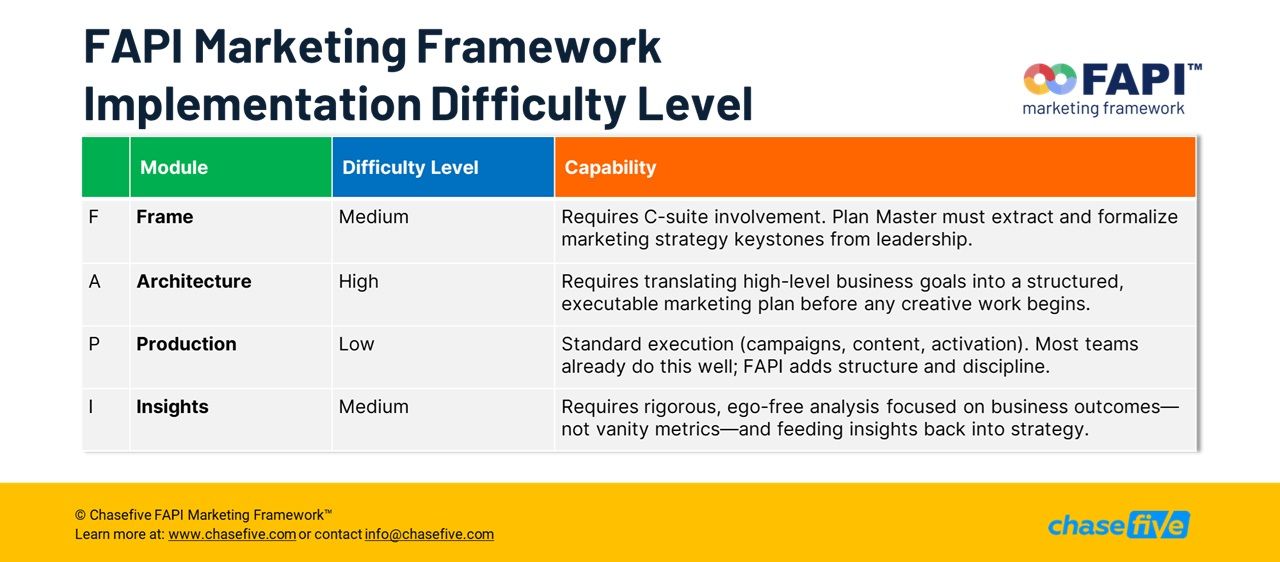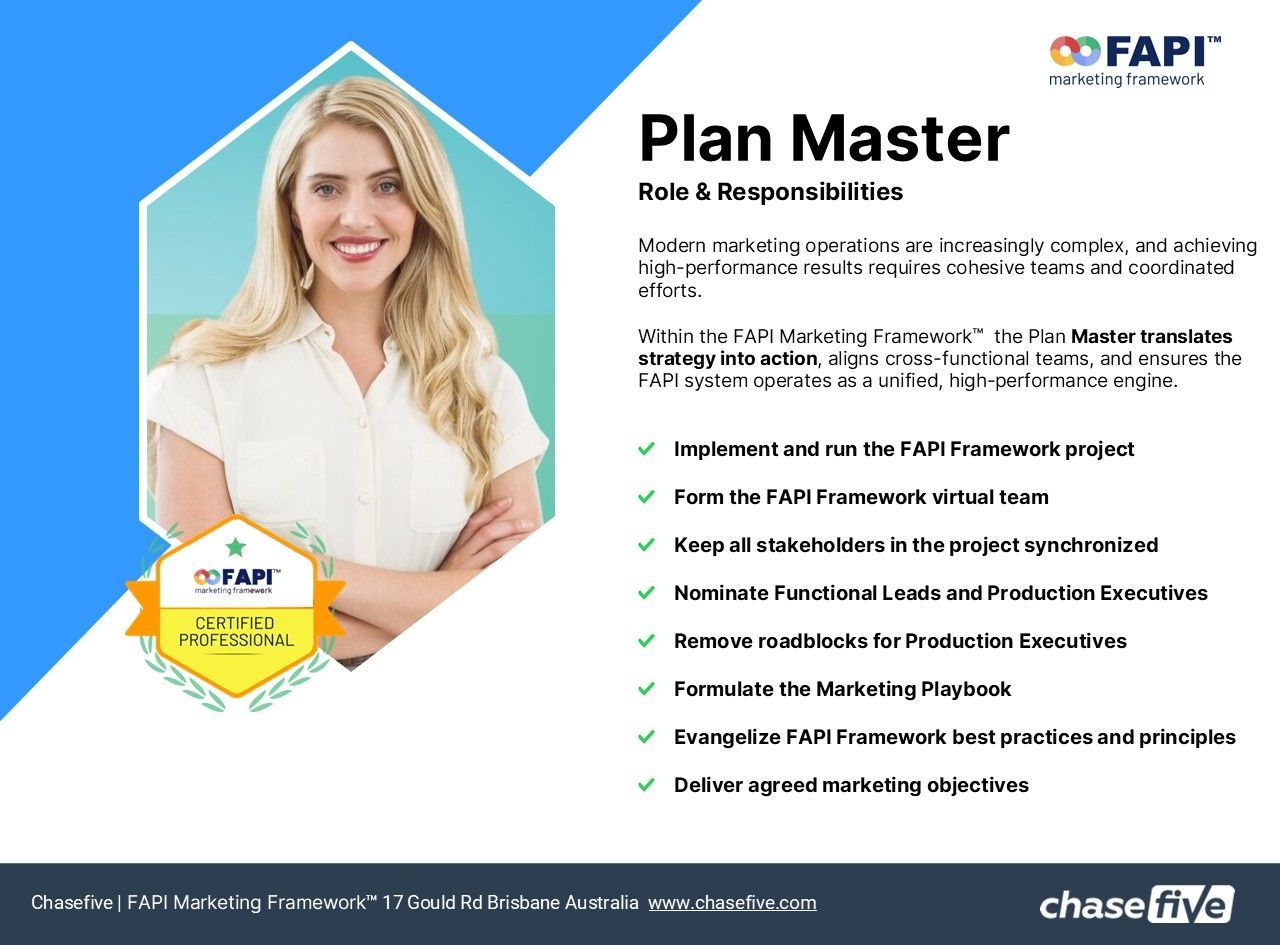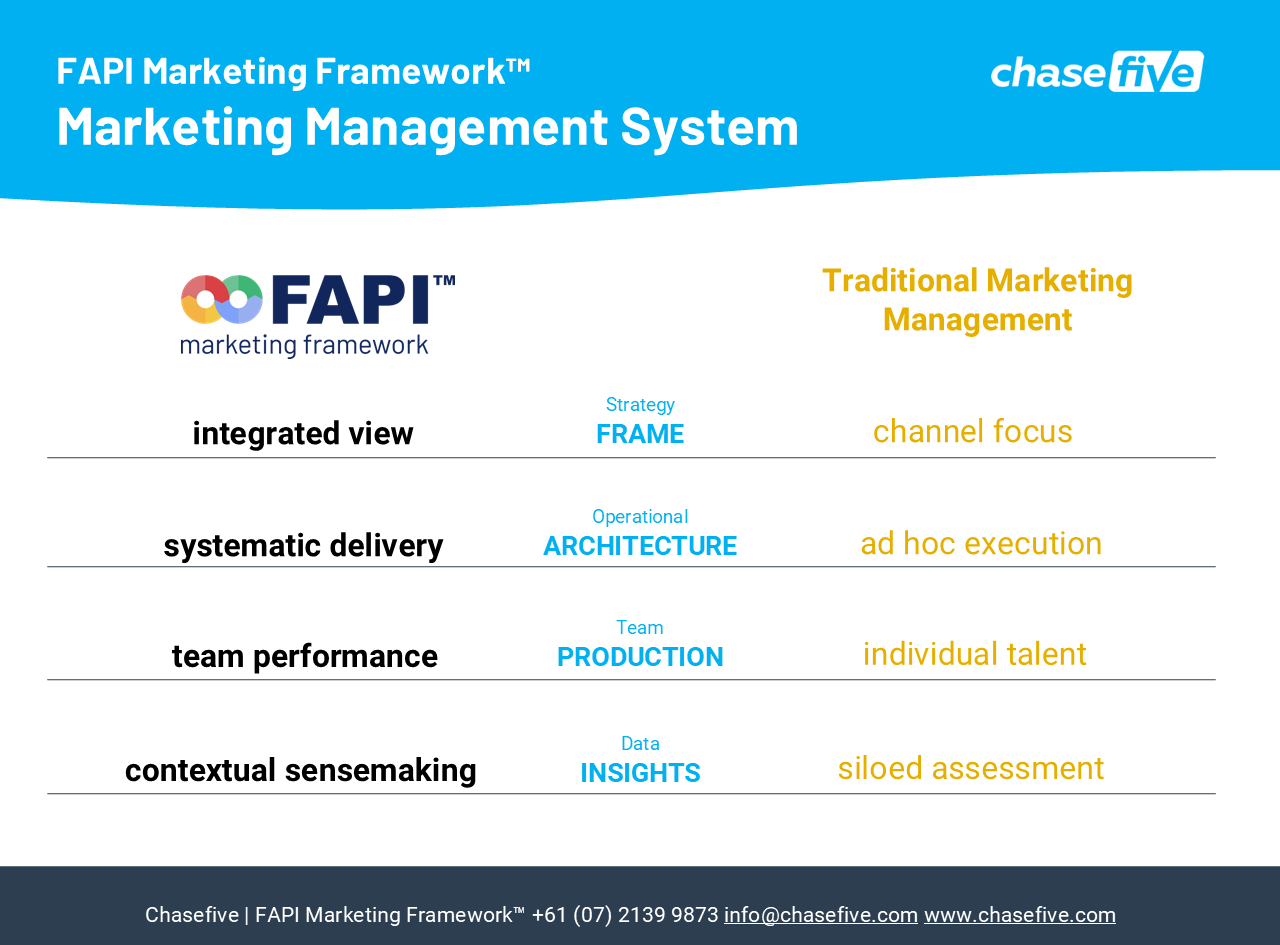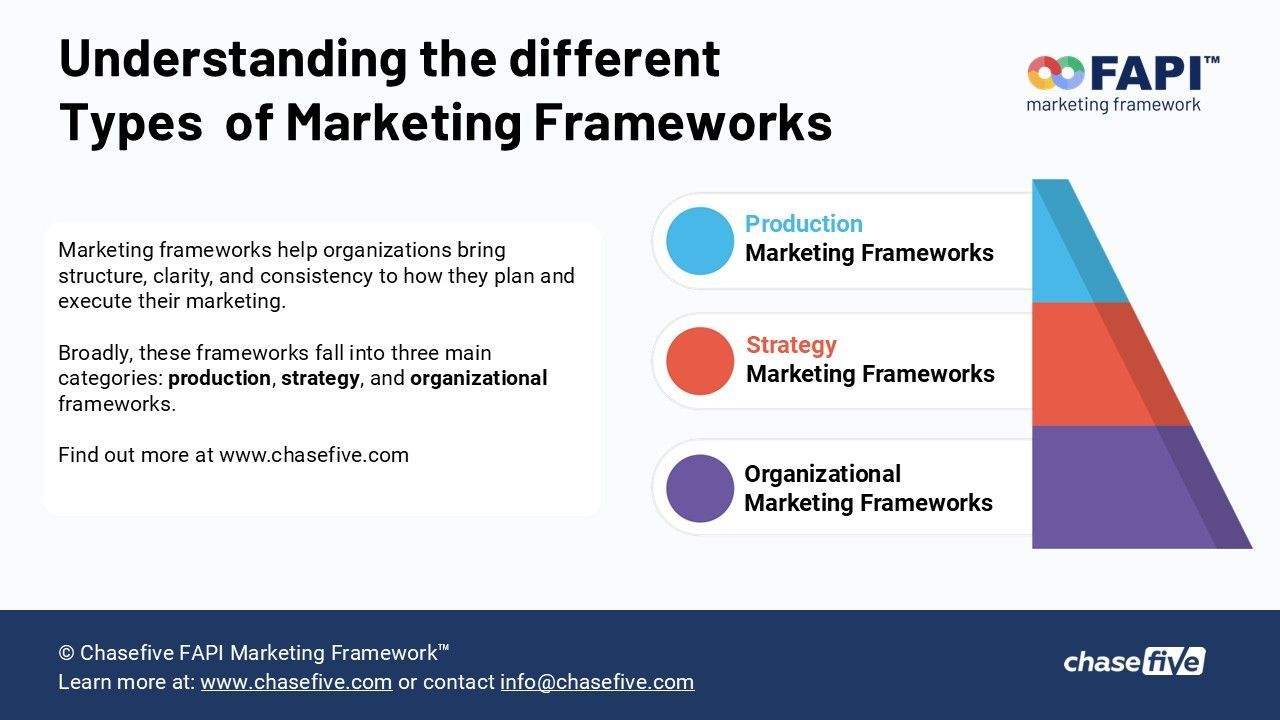20 Terms Every Marketer Should Know in the FAPI Marketing Framework
The FAPI Marketing Framework relies on a precise and structured set of terminology to ensure clarity, consistency, and alignment across every stakeholder involved in marketing planning, execution, and analysis. Whether you’re a business leader, marketing manager, or agency professional, understanding these terms is essential to mastering how modern marketing functions operate under a unified system.
1. FAPI Marketing Framework
The FAPI Marketing Framework is a sequential marketing planning and management methodology designed to help business leaders build and manage high-performing marketing functions. It provides the structure needed to align strategy, tactics, operations, and insights—bridging the gap between leadership goals and day-to-day marketing activities.
2. Frame Module
The Frame Module is the strategic foundation of the framework. It defines the long-term direction, purpose, and non-negotiable boundaries that shape all subsequent planning and decision-making. This stage ensures every marketing activity connects back to business intent.
3. Architecture Module
In the Architecture Module, strategy turns into structure. It’s the tactical phase where strategic vision is translated into actionable plans, operational systems, and measurable performance expectations.
4. Production Module
The Production Module represents the operational phase—where plans become reality. Here, Production Executives execute the campaigns, workflows, and systems defined in the Marketing Playbook, ensuring delivery meets expectations.
5. Insights Module
The Insights Module is where marketing becomes intelligent. It focuses on interpreting data, generating learnings, and optimizing performance. The goal: to create a self-correcting system that continuously improves based on real results.
6. Plan Master
The Plan Master acts as the central orchestrator of the framework—responsible for leading the project, managing cross-functional communication, and maintaining alignment between strategy and operations.
7. Functional Leads
Functional Leads represent the key areas of marketing specialization (e.g., media, content, CRM, analytics). They provide input, resources, and domain expertise to ensure each component of the plan is feasible and integrated.
8. Production Executives
Production Executives are the specialists in action. They are responsible for hands-on execution—running campaigns, managing channels, and implementing tools according to the Marketing Playbook.
9. Strategy Brief
The Strategy Brief is the main deliverable of the Frame Module. It outlines the business vision, defines strategic goals, and presents a clear roadmap for achieving them. It serves as the north star for all marketing activity.
10. Marketing Playbook
The Marketing Playbook is the key output of the Architecture Module. It’s a tactical blueprint that details what will be done, how, when, and by whom—defining every operational parameter required for coordinated execution.
11. Core Logic
Core Logic defines how MarTech tools and systems are structured. It reflects the guiding logic—whether the technology setup is strategy-led (built to deliver outcomes) or operations-led (built for efficiency).
12. Productivity Lane
The Productivity Lane represents the MarTech deployment focused on operational efficiency—systems that streamline workflows, automate processes, and track production-level metrics.
13. Performance Lane
The Performance Lane complements the Productivity Lane by focusing on strategic and commercial outcomes. It connects data and analytics to business goals, measuring the true performance impact of marketing.
14. Coherence (Principle)
Coherence is one of FAPI’s guiding principles—ensuring that all phases (Frame, Architecture, Production, and Insights) form a connected, end-to-end process with no gaps between strategy and execution.
15. Adaptability (Principle)
Adaptability ensures that marketing plans remain flexible and self-correcting. Through continuous monitoring and optimization, the framework can respond dynamically to market changes and performance data.
16. User Journey Mapping
User Journey Mapping defines the path a person takes as they engage with a brand—from initial awareness to purchase and beyond. It is essential for aligning content, messaging, and offers to each stage of the buyer’s journey.
Bringing It All Together
The FAPI Marketing Framework is more than a collection of concepts—it’s a living system that ensures marketing functions operate with discipline, clarity, and measurable accountability. Each term plays a role in creating a structure where strategic intent translates seamlessly into tactical execution and continuous improvement.
When every team member—from the Plan Master to the Production Executive—speaks the same language, marketing moves faster, performs better, and delivers results that are transparent, measurable, and aligned with business growth.







